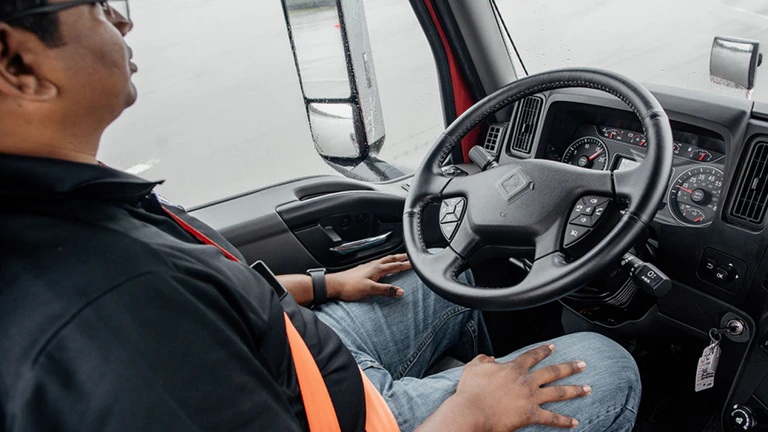Understanding how trucking is using electric and automated vehicles today can help predict how the industry will use them in the future.
I have been thinking a lot about electric vehicles and autonomous trucking lately. Both together and separately. Dave Schaller, NACFE’s director of industry engagement, and I were having a conversation the other day about how electric and autonomous vehicles were already being deployed by many fleets. And while that did not mean they were on the highways, lots of fleets — and other businesses with warehouses and parts depots and even some factories — are using some form of electric vehicle and in some cases autonomous vehicles in their warehouses or on their yards — today.
It is not at all unusual to see an electric forklift maneuvering around a parts depot or warehouse. And in many warehouses and manufacturing plants there are autonomous forklifts or automated guided carts, moving parts within the buildings. Businesses are trying out these new technologies in controlled environments on an expanding basis. But experience matters with new technology and these fleets are gaining valuable knowledge that they can apply to the roll-out of larger electric trucks when the time is right.
We also are seeing an increased use of electric yard tractors, otherwise known as terminal tractors. A 2019 Markets and Market report says the terminal tractor market is projected to reach $832 million by 2027, from an estimated $603 million in 2019, at a CAGR of 4.1%, during the forecast period. The report says the growth will be the result of port terminal automation and a general rise in the demand for electric and hybrid equipment to lower emissions.
We also are seeing a growing interest in electric vehicles of all kinds in the burgeoning last-mile delivery sector as COVID-19 has led to the explosion of e-commerce sales. This includes delivery vans and an emerging market for smaller delivery autonomous vehicles. I recently moderated a panel were very small; sidewalk robots were delivering groceries, meals and medicine in places like university campuses and retirement communities and another who employed an on-road car-like vehicle to deliver larger goods to multiple consumers.
I think as people and businesses gain more experience with electric vehicles; we will see them gain traction in the medium-duty urban delivery market followed by growth in the regional haul sector. Various duty cycles are favorable to automated vehicles.
As NACFE has stated previously, the long-haul segment of trucking will be the last to go electric, but maybe an early one for automation. It’s going to be exciting to watch the fleet electrification and automation wave hit the industry – sometimes together and other times separately. Many fleets have already gotten their feet wet so to speak.
__________________
Michael Roeth has worked in the commercial vehicle industry for nearly 30 years, most recently as executive director of the North American Council for Freight Efficiency. He currently serves on the second National Academy of Sciences Committee on Technologies and Approaches for Reducing the Fuel Consumption of Medium and Heavy-Duty Vehicles and has held various positions in engineering, quality, sales and plant management with Navistar and Behr/Cummins.
Source: https://www.fleetowner.com
CUT COTS OF THE FLEET WITH OUR AUDIT PROGRAM
The audit is a key tool to know the overall status and provide the analysis, the assessment, the advice, the suggestions and the actions to take in order to cut costs and increase the efficiency and efficacy of the fleet. We propose the following fleet management audit.




